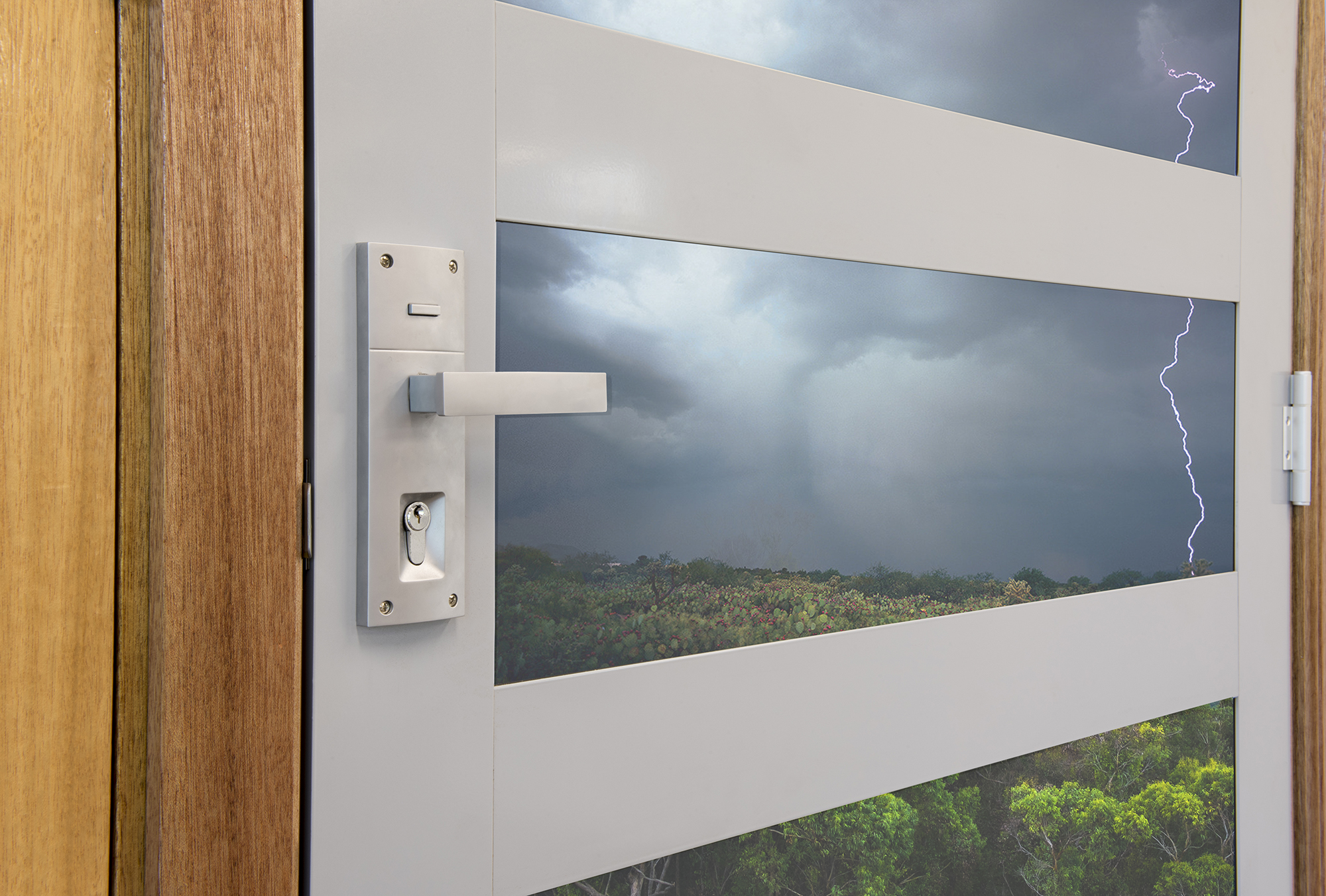Since exterior doors are constantly exposed to both the indoor and outdoor elements, they can be severely affected by changing temperatures and seasonal moisture. And, as we head into Winter, this is important to remember! Plus, June-August 2020 are likely to be even wetter than average, according to the Bureau of Meteorology.
While an entry door faces all four seasons of weather on the outside, it endures far different atmospheric pressures on the inside. Whether it’s heat from the sun or cold from an air conditioner, persistent exposure to varying weather conditions and temperatures can take a toll on the functionality of your entry door.
Here’s what you need to take into account when choosing your front door.
Paint
Weather conditions can alter the original colour of your front doors’ paintwork. Continuous exposure to the sun and rain can fade the paint. This causes paintwork to lose its lustre, and create a chalky appearance.
Extreme variations in temperature can also expand and contract the surface. Over time, this leads to cracks and chips in the paintwork. Not to mention an increase the chance of bowing, twisting or warping of the door.
Light reflective paint colours with a light reflective value (LRV) finish greater than 50 are recommended for Entrance doors to reduce the possibility of harm. For example, white usually scores about 95, while black has an LRV of 5. For this reason, some dark colours may void Hume guarantee.
If you want your doors’ paintwork to last, make sure to use the right exterior paints for the wooden surface. You’ll also need to consider the weather before undertaking the paint job. It’s recommended to paint when there’s little to no wind, the humidity is low and the temperature is above 10 degrees.
Always refer to the paint manufacturers specifications for further details.
Timber
Weather conditions can also affect different components of the door. No matter how high the quality of timber, regular exposure to the suns UV rays is likely to crack the door. Prolonged sun exposure can also turn your timber brittle, and break it down.
On the other side, too much rain can wear the timber out. This can result in a build-up of moisture. If left untreated, this may cause the wood to rot and mould to form. That’s why it’s important to protect your front door from all weather conditions.
This becomes less of an issue if entrance doors are protected by an entrance-way or overhang. See our recommendations for Overhead Protection here.
Frames
Variations in the weather can cause timber door frames to expand or contract. When the temperature, you may notice your locks beginning to stick. For example, they made need lubrication to turn during Summer. This is because door frames can swell a few millimetres as the temperature warms up.
On the contrary, you’re likely to have a hard time locking and unlocking your door during colder months. This is because door frames contract when the temperature drops. So, in Winter, you may find a poor fit between the frame and the door itself.
The high quality of a Hume door ensures this is minimised, which is why it is vital to choose the right entrance door for your home.
Maintaining your front door
Proper maintenance and routine checking is the key to your doors health, check out maintaining your door for tips on regular maintenance guidelines.
If you have invested in a stunning front door, then you certainly would want to keep it looking like it did the first time you installed it.
At Hume Doors & Timber, we manufacture customised, durable weather resistant doors. That way, you can enjoy your investment for years to come. We also provide information about doors that are best suited to certain areas, for example, doors that are better suited in moist weather conditions, or bushfire-prone areas.
If you’re looking for quality Australian made exterior doors for a cost-effective price, we recommend you speak to one of our distributors.
